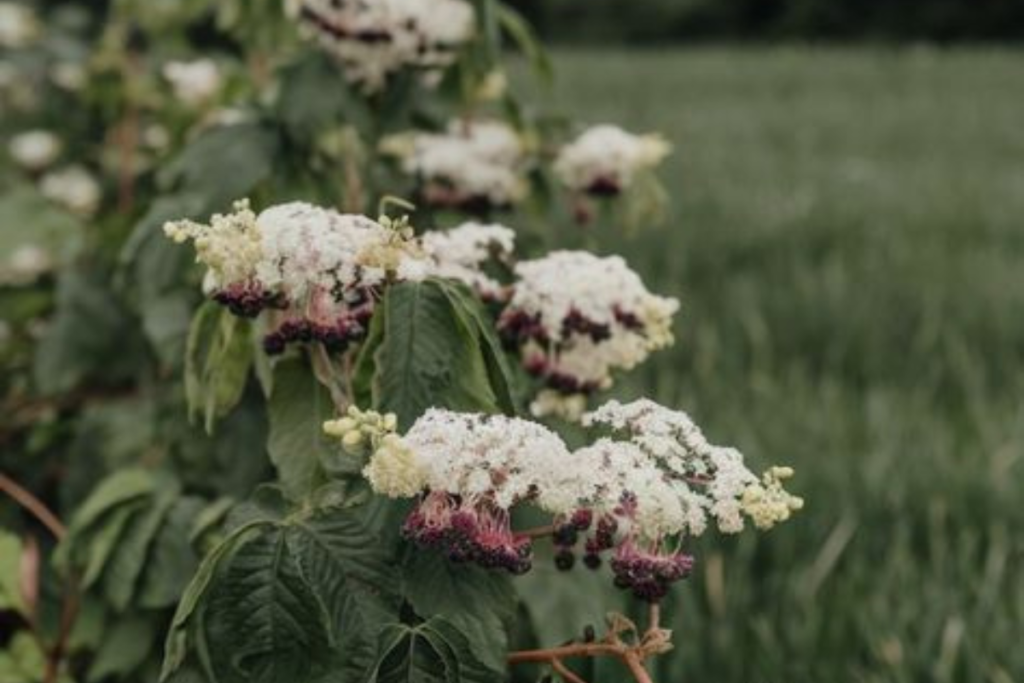Elderberry can grow into an impressive shrub, reaching up to seven meters in height and width. However, for a compact, space-saving growth and easy harvesting, pruning it into a standard tree shape is ideal. Here’s how to properly care for, prune, and train elderberry.
Key Facts about Elderberry
The Black Elderberry (Sambucus nigra) is a versatile wild fruit rich in minerals, iron, vitamins, beta-carotene, and folic acid. Its flowers and berries are the base for syrup, juice, jam, or summer drinks. But be cautious: the raw berries contain the mildly toxic sambunigrin, which is harmless only when heated.
Elderberry grows quickly and becomes woody without regular pruning. Left unchecked, it often becomes bare at the bottom, making harvesting difficult without a ladder. With the right technique and variety selection, elderberry can become a trendy ornamental and useful shrub for any garden.
How to Prune Elderberry
Pruning determines the shape and yield. There are two ways to train elderberry into a standard tree:
Train a Young Plant into a Standard Tree:

- Cut off all shoots except for one straight main stem.
- Top this stem at the desired height and leave three to four dormant buds (knobs).
- Remove all lower shoots while they are still soft.
Use Cuttings:
- In winter, cut straight shoots about one meter long and plant them in the soil.
- Let the shoot sprout, and cut it back by one-third in June to encourage branching.
- In subsequent years, trim the side shoots in spring and regularly remove the harvested shoots. This will keep the elderberry under three meters and maintain a compact form.
Elderberry Varieties for the Garden
In addition to the wild form, there are numerous cultivated varieties that stand out due to their special features:
- ‘Haschberg’ and ‘Sampo’: Large-fruited, robust varieties.
- ‘Black Lace’ (‘Eva’): Red foliage with pink flowers, a real eye-catcher.
- ‘Aurea’: Golden-yellow leaves.
- ‘Albovariegata’: White-yellow variegated leaves.
Even red-leaved varieties produce edible berries, although in smaller quantities.
Why a Standard Tree?
A standard tree offers many advantages:
- Easy harvesting without a ladder.
- Compact growth, ideal for small gardens.
- Promotes regular yields and prevents aging.
- Low-maintenance and versatile.
Easy Care and Versatility
Elderberry is not only low-maintenance but also a highlight in any garden. Whether as an ornamental shrub or a useful plant, with the right pruning, it becomes a long-lasting, productive, and decorative companion. Give it a try and discover the many possibilities that elderberry offers.
